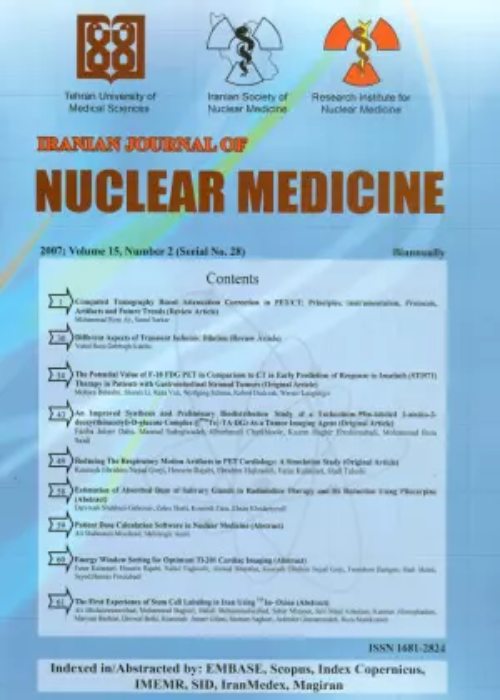Reducing The Respiratory Motion Artifacts in PET Cardiology: A Simulation Study
Author(s):
Abstract:
Introduction
There are several technical features that make PET an ideal device for the noninvasive evaluation of cardiac physiology. Organ motion due to respiration is a major challenge in diagnostic imaging, especially in cardiac PET imaging. These motions reduce image quality by spreading the radiotracer activity over an increased volume, distorting apparent lesion size and shape and reducing both signal and signal-to-noise ratio levelsMethods
4D average male torso (2 cm diaphragmatic motion) produced by NCAT phantom was used for simulations. Emission sinograms generated by Eidolon PET simulator were reconstructed using iterative algorithm using STIR. The respiratory motion correction (RMC) applied to data sets using an automatic algorithm. Cross section views, activity profiles, contrast-to-noise ratios and left ventricle myocardium widths of corrected and non-corrected images were compared to investigate the effect of applied correction. Results
Comparison of respiratory motion corrected and non corrected images showed that the algorithm properly restores the left ventricle myocardium width, activity profile and improves contrast-to-noise ratios in all cases. Comparing the contrast recovery coefficient ()shows that the applied correction effected phases of number 7,8 and 9 of cardiac cycle more than the other 13 phases and the maximum value being 1.43±0.07 for phase number 8. The maximum value of ratio of the left ventricle myocardium width for non-RMC and RMC images along the line profile passing the apicobasal direction and along the line profile passing from the middle of the lateral wall of the left ventricle were 1.38±0.07 for phase number 9 and 1.12±0.03 for phases of number 8 and 9 respectively.Conclusion
Blurring and ghosting of each image depends on the speed of diaphragm during that respiratory phase. This simulation study demonstrates that respiratory motion correction has good overall effect on PET cardiac images and can reduces errors originating from diaphragmatic motion and deformation. Effect of such a correction varies from one cardiac phase to another and this depends on the blurring and ghosting of all respiratory phases used to form this cardiac phase. Using an automatic algorithm capable of correcting respiratory motion using full signal may be very useful to prevent lengthening of the overall scan time to obtain same motionless lesion signal levels.Language:
English
Published:
Iranian Journal of Nuclear Medicine, Volume:15 Issue: 2, Summer-Autumn 2007
Page:
49
magiran.com/p629457
دانلود و مطالعه متن این مقاله با یکی از روشهای زیر امکان پذیر است:
اشتراک شخصی
با عضویت و پرداخت آنلاین حق اشتراک یکساله به مبلغ 1,390,000ريال میتوانید 70 عنوان مطلب دانلود کنید!
اشتراک سازمانی
به کتابخانه دانشگاه یا محل کار خود پیشنهاد کنید تا اشتراک سازمانی این پایگاه را برای دسترسی نامحدود همه کاربران به متن مطالب تهیه نمایند!
توجه!
- حق عضویت دریافتی صرف حمایت از نشریات عضو و نگهداری، تکمیل و توسعه مگیران میشود.
- پرداخت حق اشتراک و دانلود مقالات اجازه بازنشر آن در سایر رسانههای چاپی و دیجیتال را به کاربر نمیدهد.
In order to view content subscription is required
Personal subscription
Subscribe magiran.com for 70 € euros via PayPal and download 70 articles during a year.
Organization subscription
Please contact us to subscribe your university or library for unlimited access!


